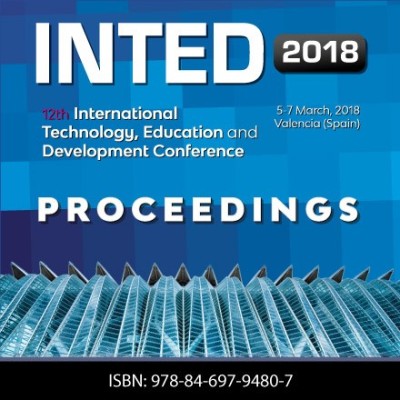Category: STE(A)M education
Published: 07/03/2018
Proceeding: 12th Annual International Technology, Education and Development Conference, pages: 2278-2282 - INTED18 Proceedings
Authors: Alden Dochshanov

The ubiquitous penetration of technologies into our everyday life may be treated as something inescapable and natural. The ways we interact, get updated, organized have been essentially influenced and facilitated by Smartphones, social networks and others ways of mobile communication. In addition, the use of specialized applications can help people to reduce significantly the times of optimization and development of virtually any imaginable consumer-product from a scratch.
However, the continuous exponential growth of available information has already triggered an up-rising demand on data-scientists, supposed to organize and extract the statistically valid outcomes for the present and future use.
From the other side, the request to increase the collaboration among different scientific fields led people towards an interdisciplinary and multidisciplinary approach, both terms of actual research and the student education. One example may be provided by nanoscience branch, one of the central research trends of today’s research and development. In fact, being considered as a multidisciplinary one, where qualitatively new steps are feasible on the base of a close interdisciplinary collaboration, the field keeps unveiling the fundamental nanometer limit of matter due to the intense worldwide research, where classical and quantum concepts merge. Worth-noting, that nano-research, in addition to a close interaction of different majors, requires individuals’ effort in terms of acquisition of a certain mindset as well, for which neither continual (classical) nor discrete (atomic) considerations are absolutely prevailing.
Therefore, considering both mentioned aspects, from one side, the necessity of dealing with a huge amount of data and from the other side, a flexibility of individuals’ mindset in terms of holistic/prone to a synthesis view acquisition, the student education will be more effective taking into account the contextualization, multiperspectivity and interdisciplinary of the learning process at every school level: from primary school to higher education.
In this context, the article aims to show how such a methodology can be realized through a research experience based on robotics by using Arduino platform.
Keywords: STEM education, learning by doing, problem solving, inquiry-based learning, technology-enhanced learning, Arduino platform.
How to cite this paper:
Dochshanov, A. (2018). Multidisciplinary Roadmap for STEM education: a case study. In INTED2018 Proceedings (pp. 2278-2282). IATED.
 The ubiquitous penetration of technologies into our everyday life may be treated as something inescapable and natural. The ways we interact, get updated, organized have been essentially influenced and facilitated by Smartphones, social networks and others ways of mobile communication. In addition, the use of specialized applications can help people to reduce significantly the times of optimization and development of virtually any imaginable consumer-product from a scratch.
The ubiquitous penetration of technologies into our everyday life may be treated as something inescapable and natural. The ways we interact, get updated, organized have been essentially influenced and facilitated by Smartphones, social networks and others ways of mobile communication. In addition, the use of specialized applications can help people to reduce significantly the times of optimization and development of virtually any imaginable consumer-product from a scratch.